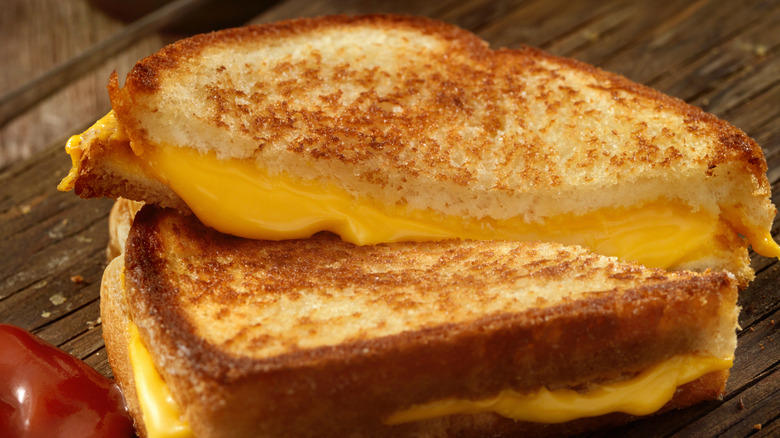How The Term 'Comfort Food' Came To Represent Our Most Beloved Dishes
Anyone who eats (so, everyone) has something they consider comfort food: A nourishing, nostalgia-laden bowl or plate of something that just makes you feel better when you need a pick-me-up. But comfort food doesn't mean the same thing to different people; though it's a concept that seems to exist in every cuisine (what human being doesn't like the food equivalent of a warm hug on occasion?), it means entirely different things to different people — even people within the same culture throughout time.
Moreover, where did the term "comfort food" even come from in the first place? As far as we can tell, it's a recent term, possibly created by a newspaper writer in the second half of the 20th century. Granted, people have always wanted food that makes them feel a certain way, but it wasn't until less than 60 years ago that we had a universal term that seems to transcend cultural boundaries — even if the food being described varies from cuisine to cuisine.
The first provable usage of the term was in 1966
As far as anyone can tell, the term comfort food comes from no later than 1966, when an article in the Palm Beach Post used it. That doesn't necessarily mean the term itself was created in 1966 — it certainly could have been in common parlance before then — but it's the first usage we know of. Regardless, it caught on quickly, to the point where it became a universally understood term within just a couple of decades (even if its meaning differs from person to person).
The interesting thing about comfort food is just how much it transcends cultures. Every cuisine has its own comfort foods — an American might reach for a grilled cheese sandwich, someone in Vietnam might crave a bowl of pho, and an Italian could feel comforted by some risotto — but the concept of food that makes you happy is a basic aspect of the human condition. That's not necessarily surprising, as food is one of the ways humans communicate with each other across cultures. People on opposite sides of the planet can hear the term "comfort food" and think of radically different dishes — but both are absolutely correct.
Comfort food has a profound psychological effect
Comfort food doesn't just help you feel better because it's a food you enjoy; a psychological component comes into play once you view a food using the term "comfort food" itself. Comfort food is usually associated with happy memories — maybe it's something your grandmother made or something you ate during a particularly happy life event — so you reach for it when you need an emotional salve. Wherever you had it, you begin to associate the food with stress relief, and the notion that it's your personal "comfort food" only reinforces its positive psychological qualities. The emotional impact of not just the food itself but the term "comfort food" can't be overstated.
Ultimately, if your comfort food is ramen or baked beans on toast, you're still viewing it the same way. Comfort food is as much about the emotion it inspires as it is about the food itself. Thankfully, we have a good term to describe it.


